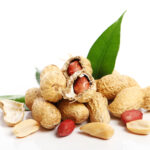In recent years, the prevalence of food allergies has been on the rise, with tree nut allergies being among the most common and potentially severe. People who are allergic to tree nuts must be cautious about what they consume, but it’s not just food that can pose a risk. Beauty and personal care products, such as lotions, shampoos, and cosmetics, can also contain hidden allergens derived from tree nuts. Understanding how to read labels for hidden allergens is crucial for individuals with tree nut allergies to avoid potential allergic reactions.
Tree nut allergies are characterised by an immune response triggered by proteins found in tree nuts, such as almonds, walnuts, cashews, and hazelnuts, among others. When exposed to tree nuts, allergic individuals may experience a range of symptoms, including itching, swelling, hives, difficulty breathing, and in severe cases, anaphylaxis, a life-threatening reaction. While the primary concern for those with tree nut allergies is avoiding tree nuts in their diet, allergens from these nuts can also be found in non-food products, including various beauty and personal care items.
When it comes to beauty products, tree nut-derived ingredients can be present in a wide range of items, including moisturisers, hair products, perfumes, and even makeup. These ingredients are often used as emollients, thickeners, or natural fragrances in cosmetic formulations. Some common tree nut-derived ingredients used in beauty products include almond oil, coconut oil, walnut shell powder, and shea butter, to name a few. However, it’s important to note that the presence of these ingredients alone doesn’t necessarily mean the product is unsafe for individuals with tree nut allergies.
To navigate the world of beauty products safely, individuals with tree nut allergies must become adept at reading product labels and identifying hidden allergens. Here are some tips to help you decipher beauty product labels effectively:
- Read the ingredient list carefully: The ingredient list is usually found on the product packaging or label. Look for any mention of tree nut-derived ingredients or any related terms. Keep in mind that tree nut ingredients can have different names, so it’s essential to familiarise yourself with common alternative names for these allergens. For example, “Prunus amygdalus dulcis” is the botanical name for almond oil, while “Cocos nucifera” refers to coconut oil.
- Look for precautionary statements: Some beauty products may include precautionary statements such as “may contain nuts” or “manufactured in a facility that processes nuts.” While these statements are voluntary, they can provide an extra layer of information to help you make an informed decision.
- Be aware of cross-contamination risks: Cross-contamination can occur when beauty products are manufactured on shared equipment or in facilities that handle tree nut ingredients. Look for labels or symbols indicating that the product is manufactured in a facility free from allergens or has undergone testing for allergen presence.
- Seek hypoallergenic or fragrance-free alternatives: Fragrances can be a source of hidden allergens, including tree nut-derived scents. Opting for hypoallergenic or fragrance-free products can reduce the risk of exposure to potential allergens.
- Consult with healthcare professionals: If you’re uncertain about a specific product or ingredient, consult with your allergist or dermatologist. They can provide personalised advice and guidance based on your specific allergy profile.
Additionally, it’s worth noting that regulatory bodies and industry organisations have recognised the importance of allergen labelling in beauty and personal care products. In many countries, manufacturers are required to label allergenic ingredients in their products, which helps individuals with allergies make informed choices.
Living with a tree nut allergy doesn’t mean compromising on personal care and beauty. By being vigilant, reading labels carefully, and understanding potential hidden allergens, individuals with tree nut allergies can select beauty products that suit their needs and minimise the risk of allergic reactions.
Remember, it’s always better to err on the side of caution. If you’re unsure about a product’s safety, consider reaching out to the manufacturer directly for clarification or exploring alternative options that explicitly state they are nut-free. Your health and well-being should always come first, and taking the necessary precautions can help you enjoy beauty and personal care routines with confidence.








